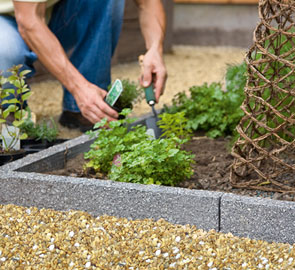The number of people and blogs talking about the importance of organic gardening are numerous. However, for a new farmer it can be difficult to decide on the type of crop that is best for your garden. Let me begin by confirming that the stories are true, organic gardening requires commitment and understanding. Organic gardening does not utilize chemical fertilizers and pesticides. Instead, gardeners, use biological methods of pest control such as a wasp trap. Organic gardening also entails the existence of nature in perfect balance; therefore, do not be surprised to see gardeners who do not mind the insects. This is because they understand the important role of insects in the garden, so much so that some organic gardeners have built a bug hotel in their gardens with the aim of enjoying all the benefits of insects in gardening.
It is important to note that the type of crop grown differs with each garden due to climatic, soil, and nutrient differences. Therefore, the clever way is to spend some time doing research on the climate in your area and the requirements of each crop. It is advised that a soil test should be utilized to identify the nutrient ratio of the soil before deciding on a crop. Organic gardeners utilize various methods of weed control, but, you should expect that there will be some weeds. The weeds can be controlled using natural weed control methods, while some can be used as food for your pet especially rabbits, all you need are good outdoor rabbit hutch plans to begin.
The choices of organic crops in the market are enormous and the new farmer needs to choose the crop that is best suited in their environment.
1. Radishes. Radishes do well even in not-so-great garden soil and are ready to harvest in only a few weeks. Plant the seeds in spring and fall.
2. Salad greens (lettuce, spinach, arugula and corn salad). Pick your favorite, or try a mix — many companies sell mixed packets for summer and winter gardening. Plant the seeds in spring and fall, and you can pick salads almost year-round.
3. Green beans. Easy to grow and prolific. If you get a big crop, they freeze well, and they are also delicious when pickled as dilly beans. Start with seeds after all danger of frost has passed.
4. Onions. Start with small plants, and if they do well, you can harvest bulb onions. If not, you can always eat the greens.
5. Strawberries. Perfectly ripe strawberries are unbelievably sweet, and the plants are surprisingly hardy. Buy bare-root plants in early spring. Put this perennial in a sunny spot and keep it well weeded.
6. Peppers. Both hot peppers and bell peppers are easy to grow. Start with plants and let peppers from the same plant ripen for different lengths of time to get a range of colors and flavors.
7. Bush zucchini. This squash will not take up as much room in your garden as many other types, and it is very prolific. Start from seeds or transplants. You will not need more than a few plants for a bumper crop.
8. Tomatoes. There is just no substitute for a perfectly ripe homegrown tomato, and it is hard to go wrong when you start with strong plants. If you get a big crop, consider canning or freezing.
9. Basil. Many herbs are easy to grow, but basil is a good choice because it is a nice complement to tomatoes. Basil is easy to grow from seeds or from transplants.
10. Potatoes. An easy-to-grow staple that stores well when kept cool. A simple and low-maintenance approach is to plant potatoes in straw rather than soil. ‘Seeds’ are whole or cut sections of potatoes, sold in early spring.
Sourced from: http://www.motherearthnews.com/organic-gardening/10-best-garden-crops-for-beginners.aspx
11. Asparagus
Plant once, harvest for years: A well-maintained bed of this sweet, slender veggie will stay productive for up to 15 years, and, with its vibrant, ferny foliage, asparagus makes an excellent ornamental. Learn how to plant, grow and harvest asparagus.
12. Beets
Red table beets are only the tip of the beet iceberg: Mangel beets can be used as livestock fodder, storage beets can be eaten all winter, and white or golden beets make a stunning edible display when mixed in a beet salad.
13. Broccoli
Tasty in each of its many varieties, broccoli is easier to grow than its relative’s cauliflower and Brussels sprouts, and can produce bountiful crops for even novice gardeners. Get tips on how to plant, how to harvest and more.
14. Brussels Sprouts
One of the last veggies to be harvested in early winter, Brussels sprouts brings the gardening year to a delicious close. Growing Brussels sprouts is easy if you plant at the right time and work with vigorous varieties. This guide includes descriptions of Brussels sprout varieties and tips for growing this cabbage-family crop in your organic

